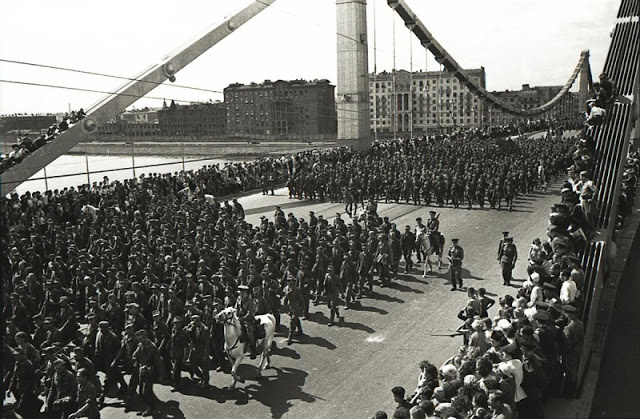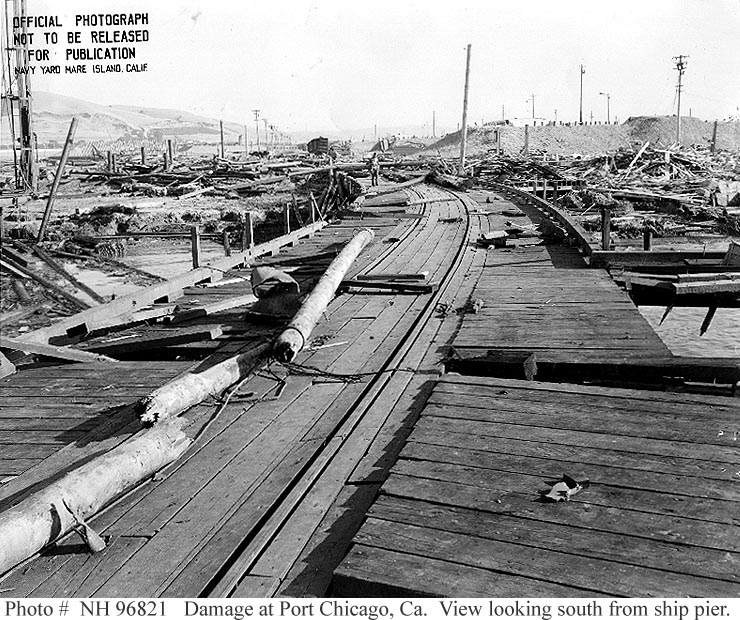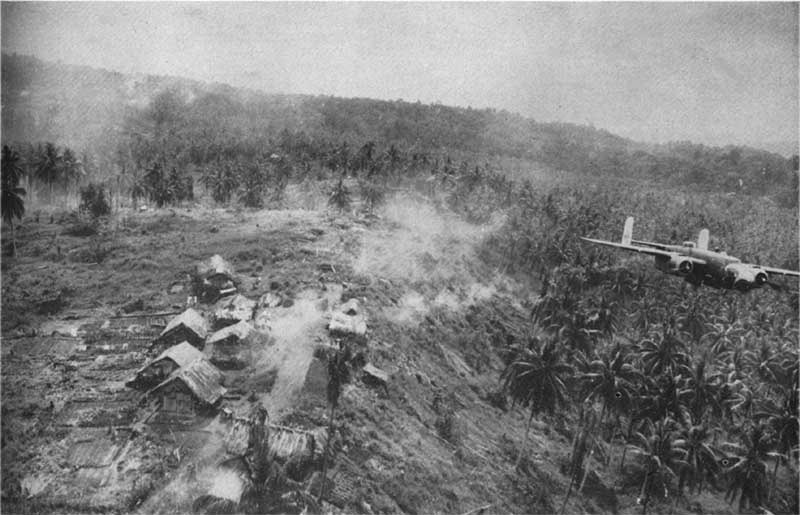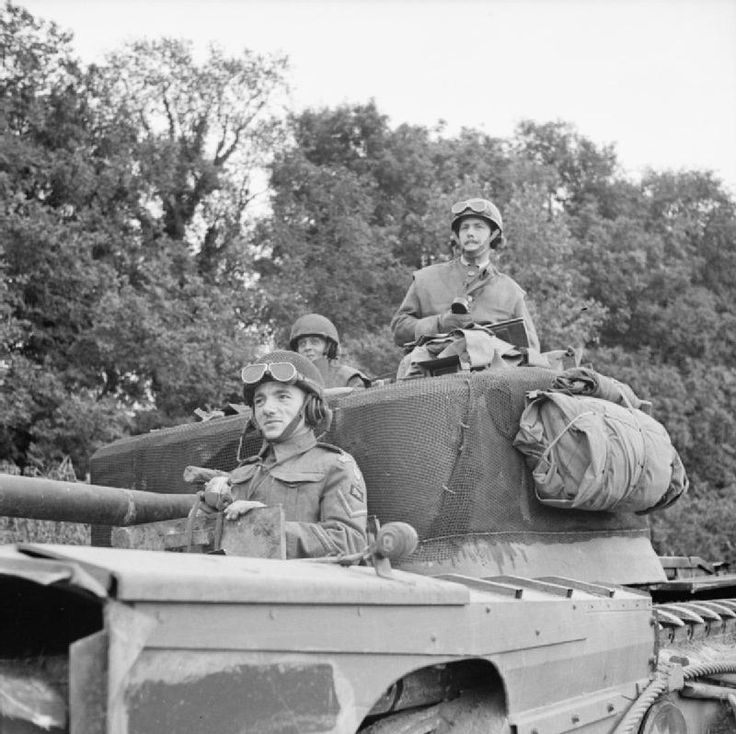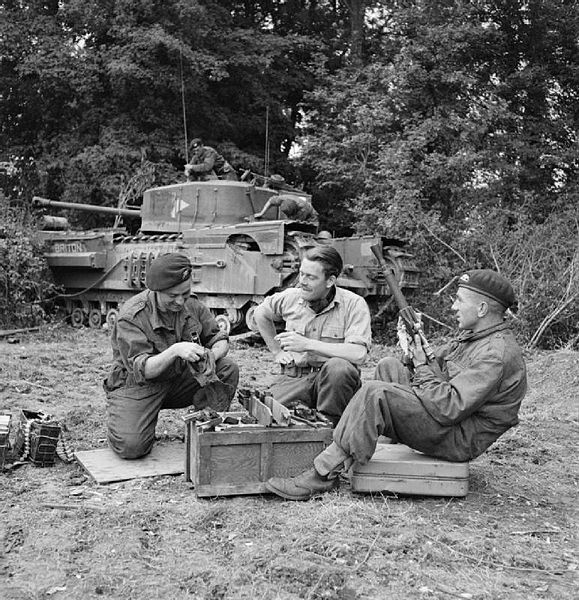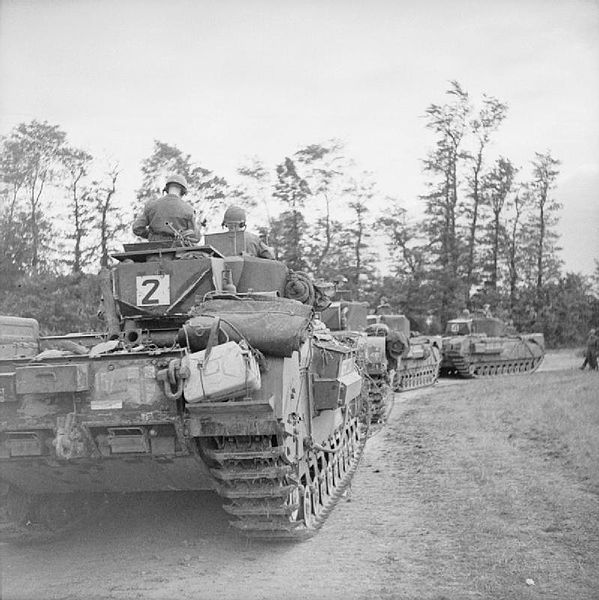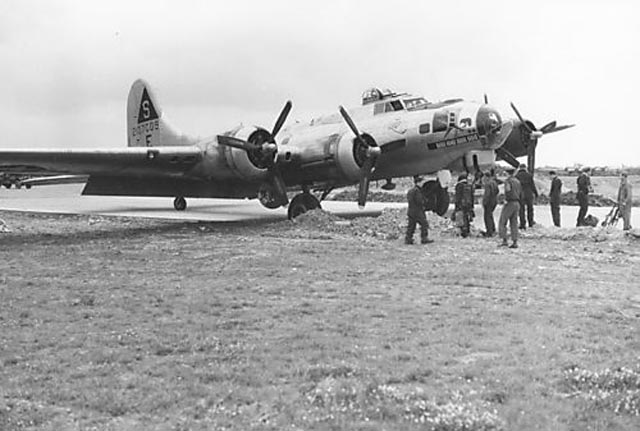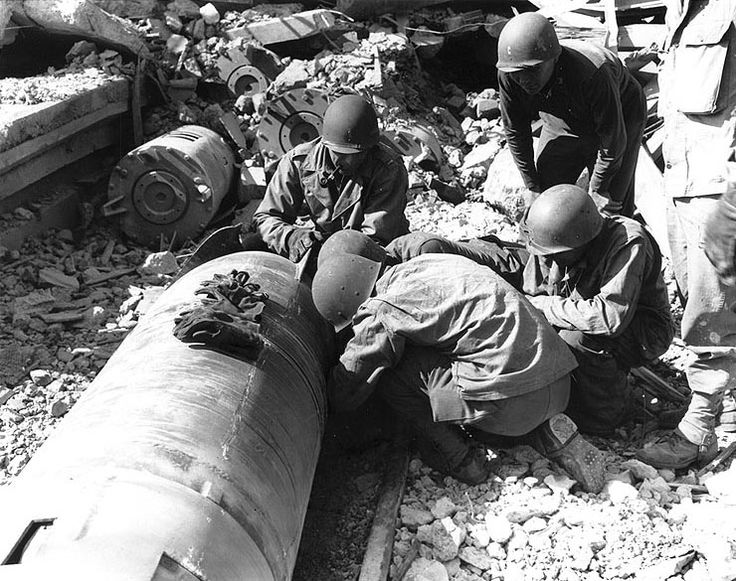Air Operations, CBI
BURMA- More than 60 10th Air Force P-51s, P-47s, and P-40s attack Tagwin, a marshalling yard at Mohnyin, and Japanese Army ground forces around Myitkyina.
- 22 308th Heavy Bomb Group B-24s attack Changsha.
- 7 341st Medium Bomb Group B-25s and 21 14th Air Force P-40s attack rail facilities at Kaifeng.
- 6 B-25s and 12 P-40s attack Tengchung.
- The 14th Air Force’s intense effort to support Chinese Army ground forces holding out in Hengyang is thwarted by the onset of what will be a week of bad weather that prevents any air support whatsoever over the city.
Air Operations, East Indies
V Bomber Command B-25s attack Fuiloro, Timor.
[Air Operations, Europe
Napalm is used for the first time by USAAF P-38s in a raid on a fuel depot at Coutances, Normandy.
RAF BOMBER COMMANDDaylight Ops:
- 132 aircraft attack 3 V-weapons sites without a loss. In this total are 72 Halifaxes, 28 Stirlings, 20 Lancasters, 11 Mosquitos and 1 Mustang.
- 23 Stirlings and 11 Halifaxes from Heavy Conversion units of Nos. 1 and 5 Groups make a diversionary flight over the North Sea without a loss.
- 31 Mosquitos are sent to Berlin, 8 Halifaxes lay mines off Heligoland and in the Frisians, 16 aircraft are on Resistance operations, and there are 38 Mosquito patrols and 24 RCM sorties.
- There are no losses.
FRANCE:
- 620 8th Air Force B-17s and B-24s, escorted by 433 VIII Fighter Command fighters, attack numerous bridges spanning the Vire and Seine Rivers, rail junctions, and other tactical targets, including many targets of opportunity.
- After completingh their escort assignments, fighters from four groups strafe rail and road targets claiming the destruction of 23 locomotives, 55 rail cars, and 18 motor vehicles.
- 1 B-17 and 1 P-47 are lost
- 106 8th Air Force B-24s and 34 B-17s, escorted by 206 VIII Fighter Command fighters, attack 12 V-weapons sites in the Pas-de-Calais area.
- VIII Fighter Command and IX TAC fighter pilots down 11 Luftwaffe fighters over France between 1000 and 2020 hours.
FRANCE:
- Despite bad weather, 69 IX Bomber Command B-26s are able to attack fuel dumps around Rennes.
- 37 A-20s attack a marshalling yard and a fuel dump.
- 9th Air Force fighters and fighter-bombers provide direct support for the US 1st Army units near Coutances and St.-Lo, and attack a marshalling yard at Nevers, the Angers Airdrome, and a fuel dump.
- For the first time in the war, IX TAC fighter-bombers attack ground targets with aerial rockets, which 12 P-47s (armed with four rockets apiece) employ with great success against a marshalling yard at Nevers. Also placed in use for the first time is napalm, which 14 370th Fighter Group P-38s employ against ground targets near Coutances.
ITALY:
- 12th Air Force B-25s and B-26s continue to attack the Po River bridges as well as bridges and viaducts servicing the battle area.
- XII TAC fighter-bombers attack rail targets and bridges north of the battle area.
- During the night, XII TAC A-20s attack several road junctions and the La Spezia area.
FRANCE:
- 15th Air Force B-24s attac a marshalling yard at Avignon and rail bridges at Arles and Tarscon.
- 332nt Fighter Group P-51 pilots down 3 Bf-109s near Toulon.
Air Operations, Marianas
318th Fighter Group P-47s attack Japanese Army positions on Tinian.
[Air Operations, New Guinea
- V Bomber Command B-24s attack the airfield at Moemi and Manokwari.
- B-25s, A-20s, and V Fighter Command P-39s attack the Boram airfield and Japanese Army ground troop between Aitape and Wewak.
Arctic
- The British cruisers Formidable, Indefatigable and Furious escorted by the battleship Duke of York send attacks against the Tirpitz in the anchorage at Kaafiord (Kaa Fjord?). The attacks are detected on the way and the Germans successfully conceal the target with smoke.
- U-347 is seen by Catalina 'Y' of No 210 Squadron RAF north of the Lofoten Islands. On the first pass the depth charges refused to release as the aircraft took damage and casualties from the U-boat's flak. The aircraft pressed home the attack and dropped the depth charges in a perfect straddle sinking the U-boat.
| Class | Type VIIC |
| CO | Oberleutnant zur See Johann de Buhr |
| Location | Norwegian Sea, NW of Lofoten Islands |
| Cause | Air attack |
| Casualties | 49 |
| Survivors | None |
Britain, Home Front
Over the next 3 days, in a bold move to protect London from V-1 bombardment, 1,596 Anti-aircraft guns are moved to the south coast. These guns start using proximity-fused shells which explode when a nearby target is sensed. This new projectile reduces the effort and ammunition needed to bring down the V-1s.
Unemployment is reported at 61,905 people, the lowest wartime figure to date.
[Eastern Front
The 1st Belorussian Front reaches the 'Curzon Line'. The 1st Guards Tank Army crosses the Bug River. German army units in the Baltic states are ordered not to yield.
NORTHERN SECTORThe 3rd Baltic Front joins the offensive now rolling along the line from Lake Peipus to Chernovitsy. Heavy fighting erupts south of the lake as the 1st Shock and 54th Armies hit the dug-in German forces. The 3rd Shock Army captures Sebezh and the 22nd Army Osveya.
CENTRAL SECTORRokossovsky unleashes the full forces of his left wing, hitting the center and north of the 4th Panzer Army.
SOUTHERN SECTORKoniev commits Katukov's 1st Guards Tank Army near Sokal, forcing a crossing of the Bug. The XIII Corps fights its way back to the Prinz Sugen line, meeting fierce resistance as it withdraws. Lelyushenko's 4th Tank Army is embroiled in bitter fighting on the road to Lvov, being bogged down with the 38th Army.
[Italy
The units of the American 34th Div make only slight progress toward Leghorn. Units of the 91st Div take Prusacco and head for Pondedera.
In the British 8th Army sector the XIII Corps pursues the Germans as they withdraw toward Florence. The Polish II Corps begins its attack on Ancona with air support.
Gen Oliver Leese, Commander of the British 8th Army, decides to attack the 'Gothic' Line with 2 corps on 2 center lines, Florence-Fiorenzuola and Florence-Bologna.[ITALY]
[Japan, Politics
(18th?)A new Navy Minister, Adm Kichisaburo Nomura, replaces Shigetaro Shimada. On July 18 Hideki Tojo resigns his post as prime minister and Chief of Staff. On July 19 Gen Kuniaki Koiso and Adm Mitsumasa Yonai are chosen to form the new Cabinet. Gen Yoshijuro Umezu becomes Chief of Staff. These changes are in fact manifestations of a growing desire on the part of many Japanese statesmen to end the war. They worry about an unfavorable peace, however, and wish to maintain the appearance of a strong front. The Allies are unable to recognize or correctly interpret these indications and the war therefore continues as before.
[New Guinea
In the Aitape area the Americans succeed in making a continuous line along the Driniumor River, but the Japanese break it again with a night attack. Other Japanese forces are concentrating in readiness for an attack against Afua, along the American perimeter.
[Norwegian Sea
Liberator 'U' of No 86 Squadron catches U-361 on the surface and attacks with 6 depth charges which straddle the U-boat. After the submarine foundered, oil and wreckage are seen on the surface.
| Class | Type VIIC |
| CO | Kapitänleutnant Klaus Becker |
| Location | Norwegian Sea, NW of Lofoten Islands |
| Cause | Air attack |
| Casualties | 52 |
| Survivors | None |
Pacific
- The Japanese minesweeper No. 25 is sunk by the US submarine Gabilan (SS-252) off Honshu, Japan.
- The US infantry landing craft (gunboat) LCI(G) is damaged by grounding and Japanese shore battery fire off Guam and is abandoned.
- The US submarine Cabrilla (SS-288) continues an attack on a Japanese convoy off the west coast of Mindanao and sinks the army transport Maya Maru (3145t) and damaging the transport Natsukawa Maru.
- The US submarine Gabilan (SS-252) sinks the Japanese minesweeper W-25 northwest of Zenizu, Japan.
- In continuing attacks on Japanese shipping off the west coast of Luzon by TG 17.16, the US submarine Guardfish (SS-217) sinks the merchant cargo ship Hiyama Maru (2818t); Thresher (SS-200) sinks the cargo ship Nichizan Maru (2838t) near Luzon Strait.
Soviet Union, Home Front
57,000 Germans, captured in Byelorussia, are paraded through the streets of Moscow.
[United States, Home Front
2 ammunition ships explode in Port Chicago, California, killing 322 people and injuring hundreds more.
[United States, Politics
President Roosevelt announces that he will leave the choice of his running mate to the Democratic Party convention.
[Western Front
Returning to his headquarters at La Roche-Guyon after inspecting the I Panzer SS Corps, south of Caen, Field Marshal Rommel is severely wounded by the attack of an Allied aircraft on his car near Vimontiers. Field Marshal von Kluge assumes Rommel's duties as well as his own as Commander-in-Chief. In the American sector the 4th Arm Div is put under the command of the VIII Corps. The US 9th Div, VII Corps, overcomes German resistance and advances rapidly along the Périers-St Lô road. The units of XIX Corps succeed in penetrating the enemy lines along the Vire River near Rampan.[WF]
In the center of the Allied line, in the British 2nd Army sector, the XXX Corps continues to advance slowly towards Noyers, but the XII Corps units fail to reach Evrecy.[CAEN]
[Images from July 17, 1944
|
|
|
|
|
|
|
|
